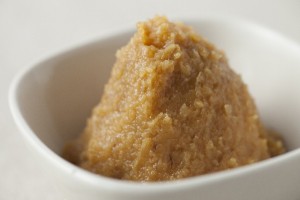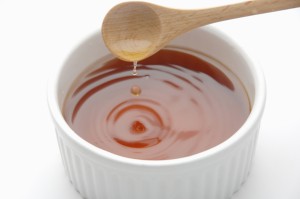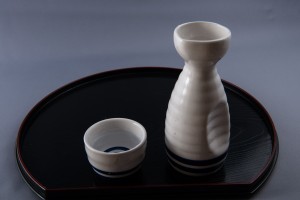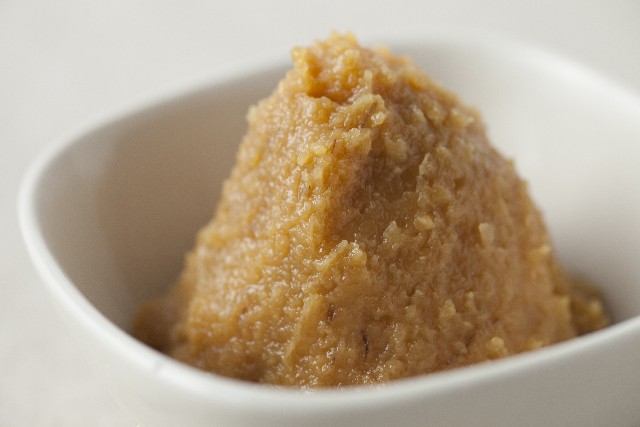Every country in the world has a unique food that has traditionally been eaten by its people. Such foods differ according to the climate, geographical influences, and history. Apparently, each food has been faithfully passed on from generation to generation while undergoing gradual changes. These traditional dishes live on to this day and have begun to make the leap from Japan out into the world.
Now, why is it that Japanese food is considered good for health and has drawn so much attention from all over the globe? The following is an explanation of Japanese seasonings, the basis of Japanese cuisine, along with an in-depth study of authentic Japanese food.
Contents:
- “Umami” (Savoriness) Is the Basis of Japanese Food
- Basic Seasonings Used in Japanese Cuisine
- Shoyu 醤油 / Soy Sauce
- Miso 味噌 / Soybean Paste
- Su 酢 / Vinegar
- Sake 酒 / Japanese Rice Wine
- Mirin みりん / Sweet Japanese Cooking Wine
- Shio Koji 塩麹 / Salt Koji
- Dashi 出汁 / Japanese Soup Stock
- TIPS
“Umami” (Savoriness) Is the Basis of Japanese Food
First and foremost, all Japanese dishes are chiefly characterized by three qualities: the use of “dashi stock,” (the source of umami), the inclusion of “fermented food” in a variety of creative ways, and the pursuit of “freshness” in ingredients. The sources of umami in Japanese food includes the glutarnic acid obtained from kombu kelp, inosinic acid from katsuobushi (smoked, dried bonito flakes) and guanylic acid from shiitake mushrooms, among others. Another feature of Japanese food is the combination of umami components in the amino acids produced by fermentation and very fresh ingredients.
Over the history of Japanese food, since the time when science wasn’t as advanced as today, cooks have improved and enhanced their cooking skills, as if to solve chemical equations, by using their experience and sensitivity while carefully selecting ingredients. Food is often offered at festivals and ceremonies, to entertain guests, and for seasonal occasions. One of the most excellent features of Japanese cuisine is that the utmost care and attention is given to how food is presented and served.
Basic Seasonings Used in Japanese Cuisine
Shoyu 醤油 / Soy Sauce
 Soy sauce is brewed by mixing soybeans, wheat, and salt with koji mold and allowing the mixture to ferment. Soy sauce is the most loved seasoning in Japan. It works to add three elements to dishes: color, flavor, and aroma.
Soy sauce is brewed by mixing soybeans, wheat, and salt with koji mold and allowing the mixture to ferment. Soy sauce is the most loved seasoning in Japan. It works to add three elements to dishes: color, flavor, and aroma.
By using soy sauce in the preparation of food, while cooking, and to finalize a dish, you can add a unique depth and umami to the flavor. Soy sauce contains a good balance of five basic tastes: sweetness, sourness, saltiness, bitterness, and umami. The flavor components of soybeans and wheat interact during the brewing process to create a new balance of flavors. Moreover, because soy sauce contains components that help eliminate the smell of raw fish and meat, people began to use soy sauce when eating sashimi.
Miso 味噌 / Soybean Paste

Miso (soybean paste) is a seasoning made by mixing grains such as soybeans, rice, and barley with salt and koji and fermenting the mixture. There are many types of miso.
Each miso has a distinct flavor, taste, color, and other features. People have their own preferences for miso, depending on the unique climate and geographical influences of the land in which they live. For that reason, often used in local specialties are the misos produced in those particular regions. That’s how the unique local preferences and flavors are passed on from generation to generation. Rice and miso soup used to be the food staples consumed by Japanese every day. In recent years, miso studies have been conducted from the standpoints of dietetics and medicine, and have rediscovered the great benefits of miso.
Su 酢 / Vinegar
 Vinegar is produced by brewing sake (Japanese rice wine) from materials like grains and fruits and adding acetic acid bacteria for acetic acid fermentation. Since olden days, vinegar has been considered healthful and has been consumed as medicine or used in traditional Chinese medicine. In particular, because of its antibacterial and antiseptic properties, vinegar has been frequently used in Japanese cuisine, centered on dishes of raw fish. Vinegar is one of the most familiar seasonings for Japanese, as it matches their taste preferences and helps to ensure the safety of dishes such as sushi with raw fish and sunomono (vinegar dishes). It’s also popular because of health benefits such as increasing appetite and relieving fatigue
Vinegar is produced by brewing sake (Japanese rice wine) from materials like grains and fruits and adding acetic acid bacteria for acetic acid fermentation. Since olden days, vinegar has been considered healthful and has been consumed as medicine or used in traditional Chinese medicine. In particular, because of its antibacterial and antiseptic properties, vinegar has been frequently used in Japanese cuisine, centered on dishes of raw fish. Vinegar is one of the most familiar seasonings for Japanese, as it matches their taste preferences and helps to ensure the safety of dishes such as sushi with raw fish and sunomono (vinegar dishes). It’s also popular because of health benefits such as increasing appetite and relieving fatigue
Sake 酒 / Japanese Rice Wine
 Sake (Japanese rice wine) is already a popular drink in the United States, but it’s also used as a seasoning in Japanese cuisine. Sake is produced by adding koji (rice malt) and water to steamed white rice and then allowing the mixture to ferment and age. There is even a saying that goes, “Sake is the best of all medicines.” This Japanese rice wine is believed to be extremely good for health when consumed in moderate amounts. Great varieties of sake are produced, and unique products are distributed as local sakes throughout Japan. Sake has such benefits as bringing out flavors, eliminating the smell of raw fish and other foods, mellowing and softening flavors, among others. Cooking sake is produced by adding 2% or 3% salt to sake and sold at less expensive prices, but this should not be consumed as a beverage.
Sake (Japanese rice wine) is already a popular drink in the United States, but it’s also used as a seasoning in Japanese cuisine. Sake is produced by adding koji (rice malt) and water to steamed white rice and then allowing the mixture to ferment and age. There is even a saying that goes, “Sake is the best of all medicines.” This Japanese rice wine is believed to be extremely good for health when consumed in moderate amounts. Great varieties of sake are produced, and unique products are distributed as local sakes throughout Japan. Sake has such benefits as bringing out flavors, eliminating the smell of raw fish and other foods, mellowing and softening flavors, among others. Cooking sake is produced by adding 2% or 3% salt to sake and sold at less expensive prices, but this should not be consumed as a beverage.
Mirin みりん / Sweet Japanese Cooking Wine
Mirin (sweet Japanese cooking wine) is an alcoholic liquid flavoring made from sweet rice, rice koji, and shochu (distilled spirits) and then allowing the mixture to age. Mirin is widely used as a seasoning. This sweet, light yellow liquid gives a nice gloss and luster to a dish and is often used as a secret ingredient. Today, “hon mirin” (true mirin) and “mirin-fu” (a mirin-like seasoning made from materials that are significantly different from those of hon mirin; produced by adding flavors from millet jelly and glucose) are available on the market. Mirin plays an essential role in Japanese cuisine. The alcohol content in mirin helps minimize the smell of raw fish and meat and allows flavors to penetrate ingredients more easily. Mirin is also used to prevent food from falling apart while cooking and as a secret ingredient to add umami to a recipe. However, if it’s used in excess, this sweet seasoning may ruin the flavor balance of your dish. Keep in mind that mirin should be used moderately so as not to kill the flavors of a recipe.
Shio Koji 塩麹 / Salt Koji
Shio koji (salt koji) is an all-round seasoning produced by mixing rice koji, salt, and water and then allowing the mixture to ferment. It lets you enjoy a slightly sweet saltiness. Since olden days in Japan, shio koji has been used as a pickling solution for vegetables and fish. In recent years it has been rediscovered for its ease of use, tastiness and health benefits and enjoys great popularity. Shio koji can be readily used in place of salt, and it adds a milder finish to the dish. Marinating in shio koji will make meat and vegetables softer and add more umami. Shoyu koji (soy sauce koji) is made with soy sauce instead of salt: it lets you enjoy a different kind of umami.
Dashi 出汁 / Japanese Soup Stock
The soup stock called “dashi” works wonders to bring out the distinctive flavors of ingredients. Dashi stock can be made by placing kombu kelp in water, heating it, removing the kombu right before the water comes to a boil and adding katsuobushi (smoked, dried bonito flakes). The glutamic acid and inosinic acid extracted from kombu and katsuobushi, respectively, make up umami components, creating a soup with great flavors, aromas and nutrition. In addition to kombu and katsuobushi, seafood and shiitake mushrooms may be used to make dashi stock.
Many varieties of powdered dashi stock are also available. They are convenient and easy to use, sparing you the time needed to make the dashi stock from scratch. However, you might want to use all-natural dashi as much as you can. As explained above, most of the basic seasonings used in Japanese cuisine are produced through fermentation. In addition to these seasonings, there are many other fermented Japanese foods. This culture of fermenting food is rarely found elsewhere in the world. The reason for that is that Japan’s climate and geographical factors are perfectly suited to food fermentation. As a result of living with Japan’s unique weather and Mother Nature, characterized by four distinct seasons, and without defying them, Japanese people must have unknowingly gained wisdom regarding the making of delicious food and living a healthy life. This background must have led to today’s much deserved attention to Japanese food.
TIPS
Add Seasonings in the Order of ”Sa Shi Su Se So”
Sa, shi, su, se, and so are part of, the Japanese alphabet but are also the syllables of the words, sato, (meaning sugar in Japanese), shio (salt), su (vinegar), seuyu (pronounced “shoyu” and meaning soy sauce), and miso soybean paste. When cooking Japanese foods such as simmered dishes, they can be effectively seasoned when the seasonings are added in the order of “sa, shi, su, se, so.”
Because sugar molecules are larger than salt molecules, if sugar is added first it will help the sweet flavor, penetrate the food well. Vinegar should be added after the food is seasoned with the sweet and salty flavors, so that the acidity won’t die down too much. Soy sauce and miso should be added last because you want to make the most of their flavors. Just remember these tips, and the Japanese dishes you cook will taste even better.

